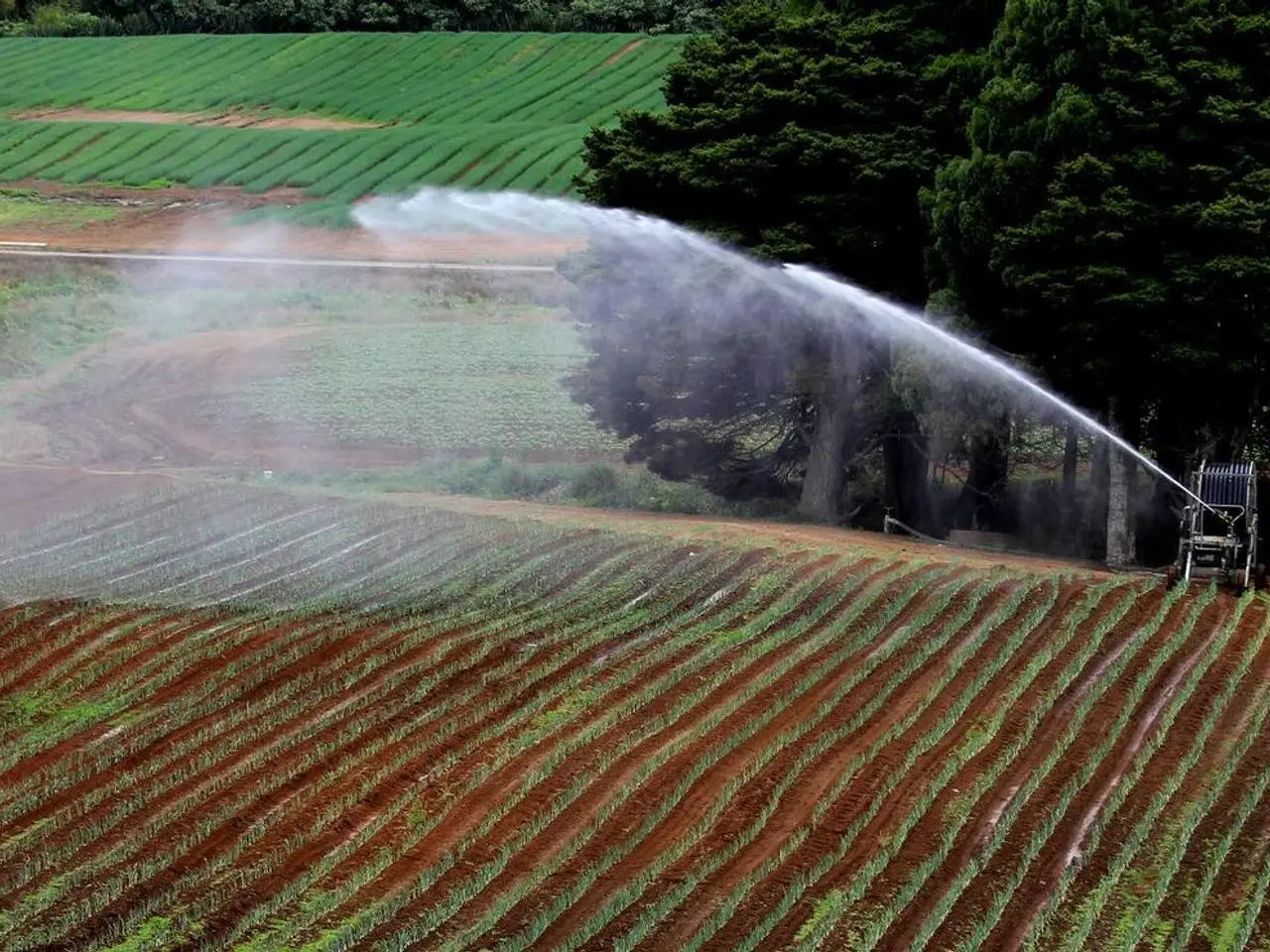Guide for Beginners: Cultivating Indigenous Plants in Permaculture Gardening
In the quest for a sustainable and resilient food system, permaculture gardens have emerged as a promising solution. These gardens, designed to mimic and work with nature, offer numerous benefits, including long-lasting productivity, low maintenance, and biodiversity support.
Choosing the Right Native Crops
The key to a successful permaculture garden lies in selecting native crops that are well-adapted to the local climate, reducing the need for external inputs like irrigation and fertilizers. Diversity is another essential factor, as incorporating a variety of crops promotes resilience in the garden.
When choosing native crops, it's important to consider pollinator support, soil health, and cultural significance. Incorporating plants that attract pollinators, such as native flowers and herbs, ensures a thriving ecosystem. Legumes, for example, contribute to soil improvement by fixing nitrogen.
Regional Native Crops
Different regions offer unique native crops that thrive in their specific climates.
North America
The Three Sisters (Maize, Squash, and Beans) is a traditional polyculture system that enhances soil fertility and provides a diverse harvest. Bee Balm, native to North America, attracts pollinators and thrives in moist soils, making it ideal for gardens around streams or ponds.
Central and South America
Yucca and Chaya, native to these regions, offer a variety of edible parts and are rich in nutrients.
Europe
Perennial vegetables like Jerusalem artichokes and asparagus are well-suited for European climates, providing a sustainable food source year-round. Wild Garlic, native to Europe, is a hardy perennial that can be used in various dishes.
Africa
Enset, native to Ethiopia, is a versatile crop providing both food and fiber. Sorghum, a drought-resistant crop, is ideal for regions with challenging climates.
Asia
Bamboo offers edible shoots and is widely adapted across different climates. Mung Beans, native to Asia, are easy to grow and can thrive in various conditions.
Australia
Lemon Myrtle, native to Australia, is used as a spice and can thrive in permaculture gardens. Warrigal Greens, a native leafy green, is excellent for salads and cooking.
Permaculture Practices
Permaculture employs several practices to ensure a healthy and productive garden. Sheet mulching helps create a nutrient-rich soil without disturbing its structure. Rotational cropping ensures soil health by alternating nutrient-demanding and nutrient-fixing crops. Companion planting, like the Three Sisters method, enhances crop growth and pest resistance.
Organic treatments like neem oil or compost tea can be used to treat plant diseases. Learning never stops in sustainable agriculture and regenerative farming.
The Learning Journey
If you're new to permaculture and native crops, start small. Look at your land and see what grows well there. Then, add native plants that fit your area. Connecting with local permaculture groups or community gardens can help share ideas and learn together.
As you get better, you can grow your garden bigger. Add more plants and learn new things. Permaculture is a journey, and every step helps our planet.
To continue educating yourself and sharing your knowledge about permaculture with others, check out our website for more information. Also, join local groups or talk to a permaculture expert for more help.
Scaling up your native crops using diverse guilds and companion plants can expand your farm. The learning journey in permaculture never ends.
Water Management Strategies
Saving water is key in permaculture. Use drip irrigation and rainwater collection. Swales and rain gardens help manage water and support native plants.
The Future of Permaculture
With hard work and a desire to learn, you can make your land a green, strong, and fruitful place. It's a great way to help our planet. Thinking about your garden's future and starting with a few plants and adding more as it grows is important for long-term success.
Every native plant is edible to something in the local ecosystem, contributing to the ecosystem. Sharing knowledge with your community helps spread the word about native crops and edible landscapes.
By following these ideas, we can make our land more productive, leading to more food, less waste, and a greener way of life.
- Choosing native crops that are well-suited to the local climate reduces the need for external inputs like irrigation and fertilizers.
- Incorporating a variety of crops in a permaculture garden promotes resilience and supports biodiversity.
- Considering pollinator support, soil health, and cultural significance is essential when selecting native crops.
- The Three Sisters (Maize, Squash, and Beans) is a traditional polyculture system that enhances soil fertility and provides a diverse harvest.
- Bee Balm, native to North America, is ideal for gardens around streams or ponds as it attracts pollinators and thrives in moist soils.
- Yucca and Chaya, native to Central and South America, are versatile and rich in nutrients.
- Perennial vegetables like Jerusalem artichokes and asparagus are well-suited for European climates.
- Wild Garlic, native to Europe, is a hardy perennial that can be used in various dishes.
- Enset, native to Ethiopia, is a versatile crop providing both food and fiber.
- Sorghum, a drought-resistant crop, is ideal for regions with challenging climates.
- Bamboo offers edible shoots and is widely adapted across different climates.
- Mung Beans, native to Asia, are easy to grow and can thrive in various conditions.
- Lemon Myrtle, native to Australia, is used as a spice and can thrive in permaculture gardens.
- Warrigal Greens, a native leafy green, is excellent for salads and cooking.
- Learning about and applying permaculture design principles, such as sheet mulching, rotational cropping, and companion planting, contributes to a healthy and productive garden.




